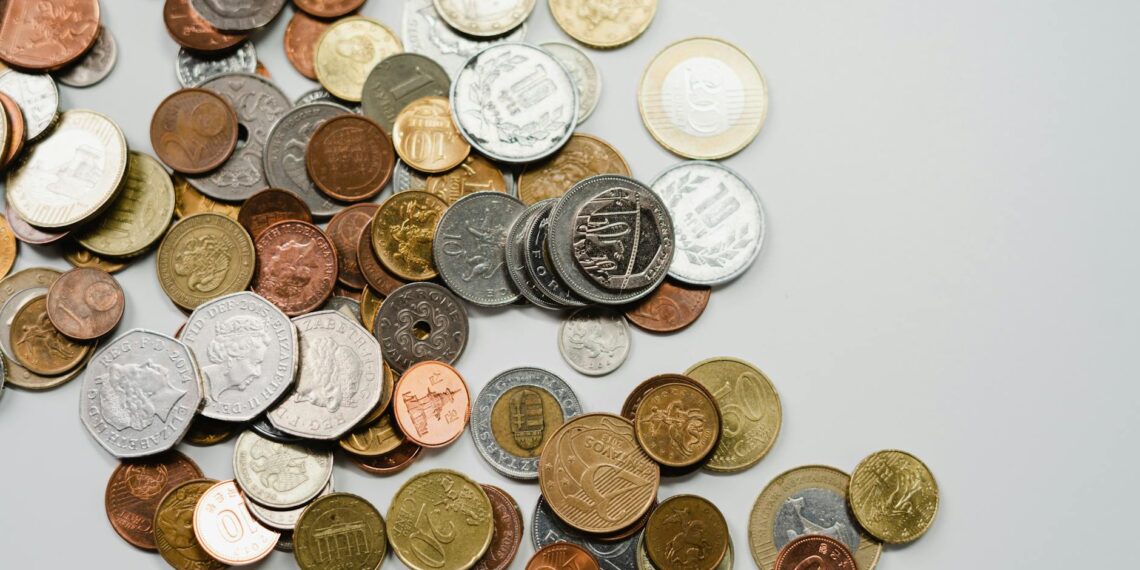Coin errors, also known as mint errors or mint-made error coins, are fascinating anomalies that can occur during the coin production process. They’re distinct from post-mint damage, which refers to harm a coin sustains after leaving the mint.
The American Numismatic Association classifies mint errors into three main categories:
These errors occur before the coin is struck, during the production of the blank metal disc, or planchet, that’s later used to create a coin.
- Blank Planchet: A planchet that was never struck by a die.
- Clipped Planchet: A planchet with a missing curved section due to a misfeed in the blanking machine, giving it an irregular, moon-like shape.
- Wrong Planchet: A coin struck on a planchet intended for a different coin denomination or metal, [according to Scottsdale Bullion & Coin].
- Improper Planchet Thickness: A planchet that is thinner or thicker than the standard size.
- Split Planchet / Lamination Error: A planchet flaw caused by impurities in the metal, leading to the coin peeling or splitting after being struck.
- Dirty/Oily Planchet: A planchet with debris, oil, or dirt that dulls or obscures the design details after striking.
These involve issues with the dies (the metal forms that impart the design onto the coin) themselves or how they’re used.
- Doubled Die: The coin design appears doubled or blurred because the die was struck multiple times during creation, but slightly misaligned with each strike. This can occur on the obverse (DDO) or reverse (DDR) of the coin.
- Die Cracks & Breaks (Cuds): Cracks or breaks in the die that appear as raised lines or blobs of metal on the coin’s surface.
- Misaligned Dies: One or both dies are not properly aligned with each other or the planchet, causing the design to be off-center on one side (but centered on the other side). This can also cause portions of the design to be missing or weakly struck.
- Overdate / Overmintmark: When a new date or mintmark is punched over an older one on the die, and remnants of the old date/mintmark are still visible on the coin.
- Die Clash: The dies strike each other without a planchet between them, leaving distorted impressions on the subsequent coins struck with those dies.
- Mule: A coin struck with two dies not intended to be used together, such as two obverse dies, [according to Wikipedia].
These occur during the actual striking process, where the die presses the design onto the planchet.
- Off-Center Strike: The planchet isn’t centered during the striking process, causing the design to be off-center and some areas of the coin to be blank.
- Broadstrike: The planchet is struck without the retaining collar in place, causing the coin to expand outward and have a larger diameter with a plain edge.
- Multiple Strike: The coin is struck more than once, creating overlapping or layered designs.
- Strike-Through: A foreign object (like grease, hair, or metal fragments) gets between the die and planchet during striking, leaving an impression on the coin.
- Brockage: An already struck coin sticks to the die, and when the next planchet is struck, the previous coin’s design is mirrored (incuse) onto the new coin.
- Die Cap: A coin becomes stuck to the die and after repeated strikes, it warps into a bottle cap-like shape.
In essence, coin errors represent deviations from the intended design and manufacturing process, making them unique and sometimes highly valuable to collectors depending on their rarity and condition.









What are the different types of error in coins?
From my experience, Labels used to identify specific categories of errors may describe the cause of the error ( die crack, rotated die, clipped planchet ), the appearance of the coin (wavy steps, trails, missing element) or other factors (mule, cud, brockage).
How to tell if a coin is an error or damaged?
I can help with that. Check for doubling, misalignment, or missing details. Edges: Inspect the edges of the coin. Mint errors may have irregularities or inconsistencies, while post-mint damage usually appears more uniform. Striking Errors: Look for coins with features like a double image or parts of the design that are missing.
Why is the 1984 $1 coin rare?
Good point! The rare 1984 $1 coin was struck on a 10-cent blank in error, instead of a $1 blank, meaning the coin is silver rather than gold.